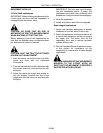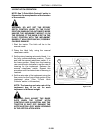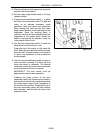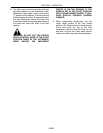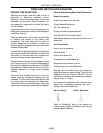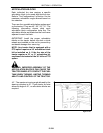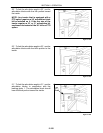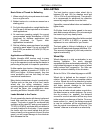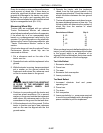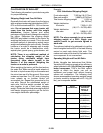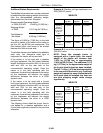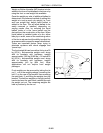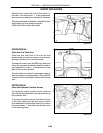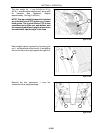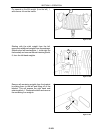
SECTION 2 - OPERATION
2-157
Every tire contact on every surface will produce
some amount of wheel slip. If there were no
wheel slip, significant drivetrain wear would be
present and damage to the tractor may occur.
Ballasting the tractor and operating with the
proper size and inflated tires will maintain wheel
slip at a manageable level (8%-15%).
Measuring Wheel Slip
Tractors that are equipped with an optional
Tractor Performance Monitor will measure
wheel slip automatically and inform the operator
if the wheel slip is at an unacceptable level
based on a preprogrammed value set by the
operator. For more information on the wheel slip
feature on the Tractor Performance Monitor,see
“Tractor Performance Monitor” earlier in this
section.
If the tractor does not have the optional Tractor
Performance Monitor, wheel slip can be
measured as follows:
1. Put a reference mark on the side of the
tractor rear tire.
2. Operate the tractor with the implement in the
ground.
3. Whilethe tractor ismoving, have an assistant
put a marker on the ground outside the
implement width where the reference mark
on the tire comes down to the ground.
DANGER: MAKE SURE THE ASSISTANT
IS CLEAR OF THE IMPLEMENT AND
TRACTOR DURING WHEEL SLIP
MEASUREMENTS.
4. Continue to move along with the tractor and
count ten wheel revolutions. Put a second
marker on the ground outside the implement
width where the reference mark on the tire
comes down to the ground for the tenth time.
5. Lift the implement out of the ground. Put the
tractor in position and put a new reference
mark on the rear tire aligned with the first
ground marker.
6. Operate the tractor, with the implement
raised, from the first ground marker to the
second ground marker. Count the number of
wheel revolutions between the two ground
markers.
7. Thetire will require fewerrevolutions to cover
the same distance because of less slip. The
following table will determine the percent of
wheel slip from the number of wheel
revolutions:
Revolutions of Wheel Slip %
9-1/2 5
910
8-1/2 15
820
7-1/2 25
730
When you have toomuch ballast installed on the
tractor, you will see theclear shape of thetire bar
in the ground which i s an indication of no
slippage. With too littleballast, the tire bar marks
will not show because of the tire slippage.
TooLittleBallast
1. Excessive wheel spin
2. Power loss
3. Tire wear
4. Excessive fuel consumption
5. Lower productivity
Too Much Ballast
1. Increased drivetrain load and power
operating cost
2. Power loss
3. Tire strain
4. Soil compaction
5. Lower productivity, i.e., more power required
to move the overloaded tractor, allowing less
power available to pull the implement.



